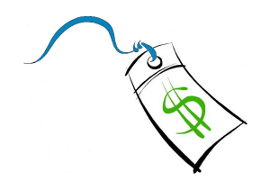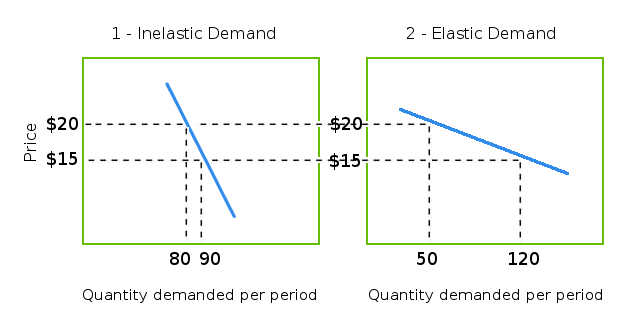First Things First, What is a Domain Name?
 A “domain name” is a fancy term which simply refers to what you see in your web browser’s address bar when you visit website. Examples include “google.com”, “greenpeace.org” and our favorite website address, you guessed it, “helpsme.com”. A domain name identifies a location on the Internet where a website can be found.
A “domain name” is a fancy term which simply refers to what you see in your web browser’s address bar when you visit website. Examples include “google.com”, “greenpeace.org” and our favorite website address, you guessed it, “helpsme.com”. A domain name identifies a location on the Internet where a website can be found.
Each domain name is unique, just as every real world house address is unique. This is necessary so that when you type an address into your browser, you reach the website you were looking for. To make sure each domain name is unique, An organization named ICANN coordinates these domain names across the world. This is partly why there’s an annual cost to owning a domain name.
.COM .NET .ORG – What Does it All Mean?
Domain names have two parts. If we use the example domain name “mysite.com”, the part before the dot identifies the site’s name (“mysite” in this example). The part after the dot (“com”) is called the “Top Level Domain”. Top Level Domains can be though of categories into which Internet addresses are divided. The Top Level Domain or domain suffix (.com, .org, .gov), is often used to identify the type of website you’re visiting.
Here are a few examples and what they are often used for:
.org – non-profit organizations
.com – commercial organizations
.gov – U.S. governmental agencies
.net – general purpose
.ca – Canadian
The question then becomes – do you have to use a “.org” for a non-profit, a “.com” for a commercial company and so on? The answer is no. Many non-profits use “.com”. However, there are certain unwritten guidelines to follow. For example, it might be perceived as a bit peculiar if Microsoft were to use a .org suffix – as in “microsoft.org”.
Domain Suffix Restrictions
Many suffixes like “.com “and “.net” are available for anyone. Many others have restrictions. For example, “.gov” and “.mil” are reserved for US government agencies and the US military respectively.
Wikipedia has a list of domain suffixes.
Registering a Domain Name
In order to use a domain name, you need to claim it first. You claim a domain name by “registering” it, which basically means buying a subscription to use the domain name. You can only register a particular domain name if nobody else has already registered it. There are many companies that provide domain registration services. A domain registrar will let you search for domains. It’s best to find a reliable domain registrar that offers reasonable prices.
It may seem self serving to mention that we offer domain registration services, but rest assured, we wouldn’t want to lose your goodwill by selling you on something that doesn’t offer excellent value. You’ll be hard pressed to find better prices and reliability elsewhere.
If you decide to use our domain registration services , the process is as follows:
- Visit our domain registration page
- Search for and find an available domain name
- Add the domain name to your shopping cart and follow the instructions
The Domain Name I Wan’t Isn’t Available, What do I Do?
Nowadays you’d be considered lucky if you were to find the domain name you want on your first search. The fact is that many desirable domain names are already registered by businesses or individuals. Some individuals even register domain names with the intent of selling them to their rightful owner at an inflated price. This is known as “cybersquatting”.
The good news is that if you hold a trademark to a name that has been registered by someone else, you can challenge that reservation.
If your organization is new and you haven’t chosen a name yet, you may be able to buy the domain name you want if it’s for sale by the current registrant. Domain prices vary widely. If the domain name you want is prohibitively expensive, you’ll probably have to find an alternative name.
Domain Name Expiration
When you buy a domain name, you’re actually getting a subscription to use the name for a specific period of time. The length of time depends on the time period you’ve paid for, usually between 1 and 10 years. Your registrar will send you an email notification 30 to 60 days before your domain subscription expires to let you know that it should be renewed. You can keep renewing your subscription for as long as you want the domain name.
If you don’t renew your domain name subscription within 60 days of expiration, the name may be made available to the public. Make sure your registrar has your up-to-date email address or you may never receive their notifications.
Choosing a Name – Branding Considerations
If you’re registering a domain name for an existing business, you’ll likely want to incorporate the name of the business in the domain name.
For a completely new business, you’re more likely to be free to choose from a wider range of possibilities.
Here are some general tips or strategies for choosing a brand name:
- Make the name memorable, short and easy to pronounce
- Effective names often use rhyming (Lean Cuisine), imagery (Blackberry, Jaguar) or alliteration (Coca Cola, Krispy Kreme)
- Avoid using location in a name because you risk turning off potential customers when your business grows
- Avoid using “.biz” or “.net” domain names. This leaves the impression that you’ve settled for what was left over. Use an alternative .com instead. Regional domain names ( “.au”, “.ca” etc.) may not be ideal from a branding standpoint, but you can get away with using them
- Avoid using another company’s name or trademarks in your domain name. Otherwise, you’re just asking for trouble.
 The American Marketing Association defines a brand as:
The American Marketing Association defines a brand as: What makes your offering different from the rest? What can you do to stand out from the pack? This article deals with the concept of product differentiation. It’s a topic relevant to all businesses and a core marketing concept.
What makes your offering different from the rest? What can you do to stand out from the pack? This article deals with the concept of product differentiation. It’s a topic relevant to all businesses and a core marketing concept. The Concept of Competition
The Concept of Competition
 Promotional pricing can help stimulate consumer interest and early purchase. It can also encourage the hesitant or unwilling to go ahead and buy. Here we outline several promotional pricing techniques.
Promotional pricing can help stimulate consumer interest and early purchase. It can also encourage the hesitant or unwilling to go ahead and buy. Here we outline several promotional pricing techniques. The simplest pricing method is to add a fixed percentage to costs. As mentioned in our article on
The simplest pricing method is to add a fixed percentage to costs. As mentioned in our article on 
 95% of your unhappy customers will never complain. They feel that complaining isn’t worth their effort, or they don’t know how, or to whom to complain.
95% of your unhappy customers will never complain. They feel that complaining isn’t worth their effort, or they don’t know how, or to whom to complain.